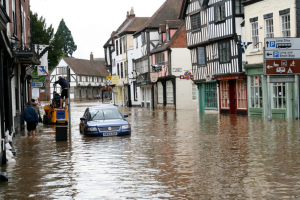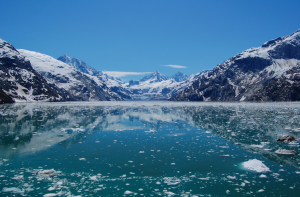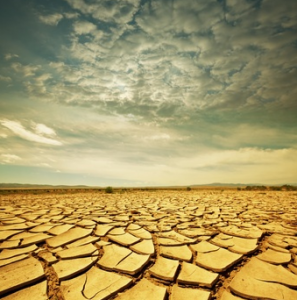Water means life. Life begun IN water and no known living thing can function without it. From the smallest to the biggest organism, the simpler to the most complex; and in between, us. GOOD NEWS: 3/4 parts of the Globe are covered by water. BAD NEWS: only 2.5% of it is fresh water, and only 0.007% of the total amount is accessible to human use.
We depend on a reliable, clean supply of drinking water to sustain our health. Not only that: because of our developed techniques and demanding lifestyle, we also need water in a daily basis for agriculture, farming, manufacturing, energy production, recreation and many more. All these uses put pressure on water resources, but stresses are likely to be exacerbated by climate change.
But, are these two topics related? And if they are, what are the connections?
‘CLIMATE CHANGE AND WATER AVAILABILITY’ was the topic of the 4th Social Skype Meeting organized by the Environmental Working Group (EnWG), which gathered a big group of people concerned on and interested in the issue.
‘Oh, here it comes again. Climate change!? You guys are always buzzing about the same topic, on and on. What does climate change may have to do with water consumption and availability?’
-Well, it really does!
Water cycle is a delicate balance of precipitation, evaporation, and all of the steps in between. Warmer temperatures increase the rate of evaporation of water into the atmosphere, in effect increasing the atmosphere’s capacity to “hold” water. There are two direct consequences: excessive precipitation in some areas, while increased evaporation may dry out some other.
 Source: US EPA
Source: US EPA
Storms are bigger, more violent and unexpected
Water cycle is already changing. Over the past 50 years, the amount of rain falling during the most intense 1% of storms increased… by almost 20%!
 Extraordinary runoffs or floods may erode and damage natural drains and slopes or land crops, dragging either pollutants or dissolved particles, and necessary nutrients from soil.
Extraordinary runoffs or floods may erode and damage natural drains and slopes or land crops, dragging either pollutants or dissolved particles, and necessary nutrients from soil.
Urban sewer systems, designed for out-of-date, former drier conditions, may also collapse and overflow, allowing untreated sewage to gush and reach fresh water supplies.
In dry areas, water demand increases while water supplies shrink
Collection of rainfall for human purposes becomes harder and requires bigger-sized facilities due to longer periods of drought. Wells may dry up.
As temperatures raise, people, animals and plants need more water to maintain their health and thrive. Just think for a second how your consume of water boosts in summer: you drink more, you take more showers, you go to the swimming pool…; also, crops irrigation has to be increased due to higher evaporation, and so animals feeding. And like this, the amount of water available for these activities goes down as Earth temperature goes up.
Natural water reserves are shrinking
Warming winter temperatures cause more precipitation to fall as rain rather than snow. Rising temperatures cause snow to begin melting earlier in the year. This may threat the supply of fresh water downstream by modifying the natural timing of rivers that have their sources in mountainous areas.
 Furthermore, glaciers are shrinking worldwide and with them present and future water supplies for millions of people, as they gather around the 70% of fresh water reserves on Earth. Studies show a global-averaged 10-59 meters/year retreat rate, and it speeds up every year.
Furthermore, glaciers are shrinking worldwide and with them present and future water supplies for millions of people, as they gather around the 70% of fresh water reserves on Earth. Studies show a global-averaged 10-59 meters/year retreat rate, and it speeds up every year.
The Arctic Ocean will likely be free of summer-sea-ice before the year 2100. (goo.gl/vZtqX)
Sea level rising causes saltwater intrusion
Predictions say sea level may rise up to 80 cm (in only 100 years!), flooding coastal areas worldwide. Ok that does not sound ‘that’ bad, does it? Let’s see it from another angle: in flat or gently sloped coastal lands or beaches, a 5 cm higher sea level would imply several meters of saltwater advance inland.
 When saltwater comes inland and reaches fresh water underground aquifers they mix in complex ways, depending on the soil characteristics. Because of their density differences and the regular human pumping of fresh water, saltwater may spread much further inland, spoiling the aquifer for human applications.
When saltwater comes inland and reaches fresh water underground aquifers they mix in complex ways, depending on the soil characteristics. Because of their density differences and the regular human pumping of fresh water, saltwater may spread much further inland, spoiling the aquifer for human applications.
Saltwater intrusions reach the surface and help increase salinity of soils, turning productive lands into sterile deserts in few years.
There is an African proverb:
‘You think of water only when the well is dry’
Are you aware of the amount of water you use every day?
Statistics say ‘each one’ of the 700 million European citizens consumes between 100-200 liters a day! Just ‘do the math’.
Reducing water consumption is, today, more important than EVER in history.
And it may be surprisingly simple… Do your part!
Written by Pablo Laboreo, AEGEE-Santander and member of the EnWG

